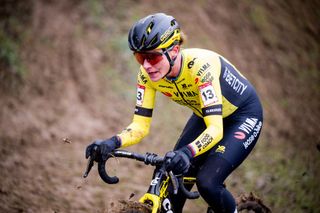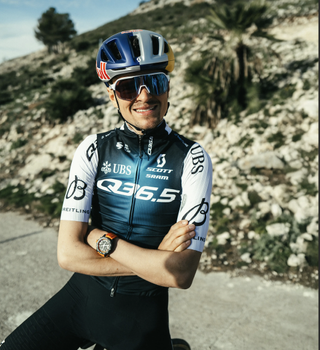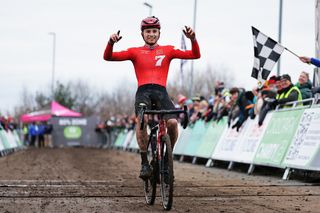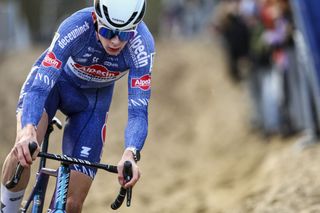Critérium du Dauphiné race preview
Froome, Contador and Nibali set for battle



Every second counts at the Dauphiné this year as a clique of Tour de France rivals face off in their final race before next month’s grand départ in Yorkshire. The Dauhpiné in itself is a major prize for any rider’s palmares and this year’s edition looks set to go to the wire with a mountain-heavy course, just 10.4km of time trialing and bonus seconds thrown into the mix. Defending champion Chris Froome (Team Sky) is set to ride and will be looking to cement his place as the Tour’s out-and-out favourite with a win against Alberto Contador (Tinkoff Saxo), Vincenzo Nibali (Astana) and Tejay van Garderen (BMC).
The 2014 edition of the race begins with a 10.4km time trial in Lyon. Bookended with relatively flat and straight sections at the start and finish, the stage does contain a fourth category climb to Montée de l'Observance, which at 800 metres in length and with a gradient averaging 5.5 per cent, should not trouble the pure time trialists. A testing descent from the climb could prove more troublesome than the ramps up it. It’s the only time trial in this year’s race, with ASO opting to remove the typical long-distance time trial from the schedule. Time gaps between the favourites should be minimal but confidence could be key and any morale-boosting performance will be seen as a victory.
While the opening stage shouldn’t provide a definitive shape to the GC, the second stage surely will, with a 156km test from Tarare to Pays d'Olliergues-Col du Béal containing six categorised climbs, including a final 13.6km uphill finish for good measure. It’s likely that a break will form on either of the two opening climbs of Côte de Saint-Marcel-l'Éclairé and Côte d'Albigny but the GC contenders will be keeping any move on a short leash this early in the race.
The cluster of climbs mid-stage, the Côte de Bard, Col de la Croix de l'Homme Mort and Col des Pradeaux will force an initial selection, before a section in the valleys leading towards the Col du Béal. The final ascent starts gently enough but there are pitches rising upwards of nine per cent before the road levels off between six and eight percent. Time gaps will be in seconds rather than minutes but a pecking order in the fight for GC and the king of the mountains should already be in motion. Time bonuses of ten, six, and four are up for grabs on the line too.
Stage 3 from Ambert to Le Teil should see the sprinters come out and play for the first time in the race. Granted there are two categorised climbs en route to the finish, but with the summit of the last peak over 30 kilometres from the finish any GC rider will save their strength, while any break should be controllable if the sprinters’ teams are willing to collaborate.
Stage 4 to Gap is hard to predict. The weather could certainly play a part but the Col de Manse, coming inside the final 20 kilometres should see the pure sprinters dropped and struggling to regain contact. The overall contenders are likely to just sit and watch each other but the descent to the finish provides a possible chance to slip clear and catch rivals napping.
The Col de Manse comes into play on stage 5, too, as the first of six climbs during a stage suited to breakaways, although the overall contenders will have to make sure the move doesn’t contain any dark horses for GC. The Col de la Morte and the Côte de Laffrey are the final two climbs but the descent between them could prove just as vital. The run-in to the finish is far from flat either, so even if a break goes clear the overall contenders may still race each other. Stage 6 to Poisy, meanwhile, is ideal for the sprinters and their last chance to take a win with the final two days of racing set to decide the overall.
On paper at least stage 7 from Ville-la-Grand to Finhaut-Emosson looks the toughest. The top contenders for yellow may still be separated by less than a minute as the first three climbs of the day sap strength and reserves before a mouth-watering showdown on the Col de la Forclaz and the Montée de Finhaut-Émosson. The first climb is consistent – between 7-9 per cent - and should suit a team like Sky or Tinkoff-Saxo in setting tempo. However the final climb is one for the climbers who thrive on changes in pace and gradient, with pitches varying from 1 to 17 per cent and a number of 10 per cent section closer to the summit.
The final stage is similar: another test in the mountains and another summit finish with the race moving further into the Alps for a summit finish at Courchevel. The ski resort has played host to a number of Tour de France stages before: one that sticks out being in 2000 when Marco Pantani finished ahead of José Maria Jimenez.
The contenders
The outright favourite for this race, and the Tour itself, remains Froome. Question marks remain over the depth of his team but his Romandie ride suggests that he is over his back injury and close to his best. Alberto Contador has looked like a new rider this year and has looked faster than Froome in patches this year. However their last head-to-head was in March and that can seem like an eternity in sport.
This isn’t just a two-horse race. Vincenzo Nibali hasn’t taken well to his new French-heavy racing schedule but when on top form he’s a match for both Contador and Froome. The lack of time trial miles will help him and he got the better of Froome before in last year’s Tirreno-Adriatico.
This is not just a test for those three riders, however, this will be a major battle between the three teams expected to control the Tour de France with Tinkoff-Saxo, Sky and Astana all close to full strength.
Tejay van Garderen has shown flashes of strength in the lead up to the Tour. A result – a top three – would be a welcome boost for a rider set to spearhead BMC’s challenge at the Tour. He doesn’t always have the acceleration but his stage win in Cataluyna certainly made people sit up and take notice. Romandie, meanwhile, was a write off so consistency – one of his strengths – will be crucial.
Jean Christophe Péraud and Romain Bardet will lead a strong Ag2r-La Mondiale contingent, with Thomas Voeckler ruling the roost over at Europcar.
Daniel Moreno rides for Katusha and finished third overall last year but like Ryder Hesjedal the wear and tear from the Giro d’Italia may prove too much. Garmin-Sharp arrive with Andrew Talanksy as their main hope while Omega Pharma-QuickStep are backing their young talent Michal Kwiatkowski.
Get The Leadout Newsletter
The latest race content, interviews, features, reviews and expert buying guides, direct to your inbox!
Daniel Benson was the Editor in Chief at Cyclingnews.com between 2008 and 2022. Based in the UK, he joined the Cyclingnews team in 2008 as the site's first UK-based Managing Editor. In that time, he reported on over a dozen editions of the Tour de France, several World Championships, the Tour Down Under, Spring Classics, and the London 2012 Olympic Games. With the help of the excellent editorial team, he ran the coverage on Cyclingnews and has interviewed leading figures in the sport including UCI Presidents and Tour de France winners.
Most Popular
Latest on Cyclingnews
-
'The candle went out' - Marianne Vos misses out on podium at Dutch Cyclocross Championships
'Despite the suffering, I still had fun' says former eight-time cyclocross world champion -
Tom Pidcock tells BBC he will not ride the 2025 Tour de France
Briton targeting one-day races this season with new Q36.5 team -
British Cyclocross National Championships: Three-in-a-row as Cameron Mason claims another elite title
Ben Chilton claims under-23 title in Gravesend -
Dutch National Cyclocross Championships: Tibor del Grosso secures stunning victory after three-way battle for elite men's title
Pim Ronhaar and Joris Nieuwenhuis forced to settle for second and third, respectively, in Oisterwijk



